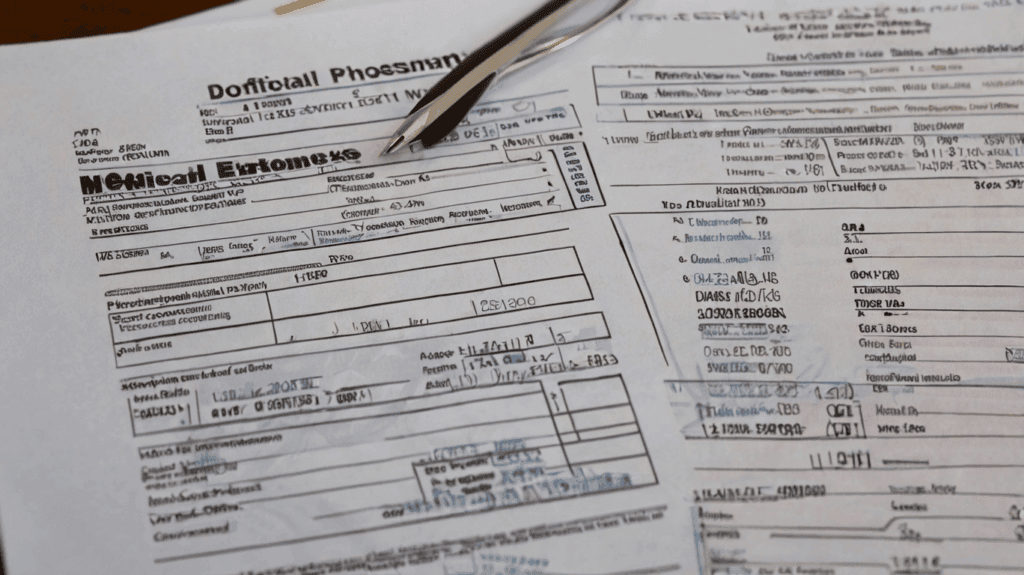
By alphacardprocess July 17, 2025
As health care shifts to digital, the back-end business particularly payments is changing quickly, too. From insurance reimbursements to out-of-pocket payments, health providers are now operating in a web of complicated financial workflows in which clarity, speed and compliance are must-haves.
One topic which is often a source of confusion is medical billing vs. merchant services. Even though they both involve raising money, they are entirely separate things. Medical billing pertains to the submission of claims to insurance companies, accuracy in coding, and processing reimbursements. However, merchant services, include dealing with payment processors, processing credit card payments, debit transactions, and point-of-sale transactions—especially related to self-pay patients.
So when healthcare businesses mix these two, you can have some serious problems, such as claim denials, compliance breaches, delayed payments, and breaking industry rules in the form of HIPAA and PCI DSS. Poor management of either process can damage patient trust and revenue. In this article, we will distinguish the major differences between medical billing vs. merchant services and other notable details. Let us start.
Understanding Medical Billing
Medical billing is a process that involves submitting and following up on claims with health insurance companies. It ensures that providers are paid for services performed. This process is that of converting medical records to standardized codes, ICD-10 in case of diagnosis and CPT for procedures. After the claim is coded, it is sent to the payers (insurance companies) for approval and payment.

The workflow doesn’t stop there. It additionally involves denial management, prompt follow-ups, appeals, and correct resubmission in order to achieve highest claim acceptance rates and the least amount of revenue loss.
Key Components
Proper medical billing begins with the proper collection of patient demographics and insurance verification. Providers need to verify coverage and eligibility by billing staff prior to rendering services. After patient encounters, services are coded and submitted through clearinghouses or directly to payers
The remit is then generated and the remaining amount is billed to the patient. These tasks are part of the broader system known as Revenue Cycle Management (RCM), which follows patient care from registration to final charge.
Who Uses Medical Billing?
When discussing medical billing vs. merchant services, let us understand about the application. Medical billing is a necessity for many practitioners. All these institutions from hospitals, to private practices, to specialty clinics employ the referral process. Some handle this in-house by way of billing units, while others contract external billing providers to minimize administrative responsibilities.
Regulatory Framework
For security of patient information, medical billing practices should meet the necessary HIPAA compliances. Additionally, it must align with Centers for Medicare & Medicaid Services (CMS) guidelines and various private payer protocols. Failure to comply may lead to claim rejections, fines, or litigation.
Understanding the distinctions in medical billing vs. merchant services begins with recognizing how deeply regulated and complex the billing side of healthcare truly is.
Understanding Merchant Services
Merchant services are the financial instrument and technology that allow businesses to process payments electronically (including credit and debit cards, ACH transfers, and contactless payments such as Apple Pay or Google Pay). In the context of healthcare, these services are crucial for collecting co-pays, self-pay balances, and out-of-pocket fees at the point of care or online.

Merchant services are generally a combination of the following: Payment processors, payment gateways, point-of-sale systems (POS), and merchant accounts. These provide everything you need to carry out safe and seamless payments between patient and provider.
Core Functions
The major functions of merchant services are authorization (the card/account is verified), settlement (funds are transferred to the provider) and fund transfer (money is deposited after approval).
Depending on how you’ve set things up, providers can use tools such as virtual terminals, physical card readers, or mobile payment devices. These solutions enable healthcare practices to decrease wait times, enhance patient convenience and facilitate payment collections.
Who Provides Them?
Banks, Independent Sales Organizations (ISOs), Merchant Service Providers(MSPs) or Payment Facilitators (PayFacs) like Stripe, Square or Clover are often the providers of merchant services. And there are even healthcare-specific vendors who custom-fit payment options to address compliance and integration requirements of medical practices.
Compliance and Risk
Unlike retail, healthcare providers must be mindful of HIPAA regulations when processing payments, especially if any Protected Health Information (PHI) is handled during transactions. What’s more, healthcare is often characterized as a high-risk industry on account of challenging regulations and elevated chargeback rates.
Although medical billing vs. merchant services appear to be very alike, they have different responsibilities, compliance requirements, and technical systems. Understanding these differences is important in maintaining a safe and effective medical practice.

Where the Lines Blur: Points of Overlap
The line between medical billing vs. merchant services is increasingly blurred due to integrated healthcare technologies. Today’s EHR platforms often include embedded payment processing features that bring both worlds together.
Integrated EHR and POS Systems
Platforms like Kareo, Athenahealth, and AdvancedMD offer combined billing and payment modules. For example, a patient may tap a card to pay a copay while the system simultaneously begins claim submission to the insurer. This creates operational ease but also demands clear boundaries between functions.
Patient Statements and Collections
After insurance pays on the claim outstanding balance is patient’s responsibility. In this instance, medical billing will identify the balance, but merchant services will do the actual collections, via card payment, ACH, or payment plans.

Healthcare Subscriptions and Recurring Billing
Wellness-based practices frequently provide monthly membership plans or prepaid visit packages. These are medical services, but the payment model is more like a merchant subscription service so it’ll need support for recurring billing and PCI compliance, etc. This is one of the places to take care of medical billing vs. merchant services.
Digital Patient Portals
Various platforms allow patients to see claims, make payments and monitor their billing history. These applications are an amalgamation of both billing and merchant services so an appropriate level of access control and compliance control is required.
Drawing the Line: Where to Separate Billing from Merchant Processing
Despite overlaps, it’s critical to define boundaries between medical billing vs. merchant services to avoid compliance pitfalls and internal confusion.
Regulatory Responsibility
HIPAA applies to patient health information; PCI DSS is concerned with cardholder data. The two of them combined can bring some real violations. Merchant systems are supposed to not store PHI, whereas billing systems should not expose access to payment tokens.
Team Responsibilities
Ensure clear role definitions. Card payments shouldn’t be processed by billing experts who don’t have PCI training. Conversely, billing software should restrict payment processor access to just the necessary financial information.

Technology Boundaries
Leverage integrated systems that maintain access segmentation. For example, POS terminals should not be enabled to access clinical data. On the other hand billing software should make sure the payment processor is granted access to only the needed financial data.
Vendor Selection
Select vendors who know both HIPAA and PCI. Just about every billing platform on the market today comes with built-in payment functionality; you should weigh how meticulously each tackles data segregation, access control, and accreditation.
By keeping a strict boundary between medical billing vs. merchant services, healthcare businesses can enhance security, streamline workflows, and maintain regulatory peace of mind.
Conclusion
Transparency is important in the changing world of healthcare payments. The confusion between medical billing vs. merchant services can cause inefficiencies, noncompliance, and revenue loss. Medical billing manages insurance claims, coding and revenue cycle responsibilities, whereas merchant services platform for real-time electronic patient payments.
Regardless if you’re a private clinic, hospital or wellness practice, syncing your billing and merchant processes in a smart way ensures efficiency from front to back, happy patients, and financial longevity.
Frequently Asked Questions
1. What is the main difference between medical billing and merchant services?
Medical billing involves coding and submitting insurance claims. Merchant services process real-time card or digital payments, like copays or balances.
2. Can the same staff handle both billing and payment processing?
It’s best to separate roles. Billing staff need HIPAA training, while payment handlers should understand PCI compliance to reduce cross-compliance risks.
3. Are there systems that combine both functions securely?
Yes, many modern EHR platforms integrate billing and payment tools while enforcing data segregation and role-based access controls.
4. Is using a payment processor in healthcare risky?
Healthcare is considered high-risk, so choose a merchant provider that understands HIPAA, PCI-DSS, and the nuances of medical payments.
5. Can storing card details violate HIPAA?
HIPAA doesn’t govern card data, but storing card info with patient health data in the same system without proper encryption may lead to compliance issues.